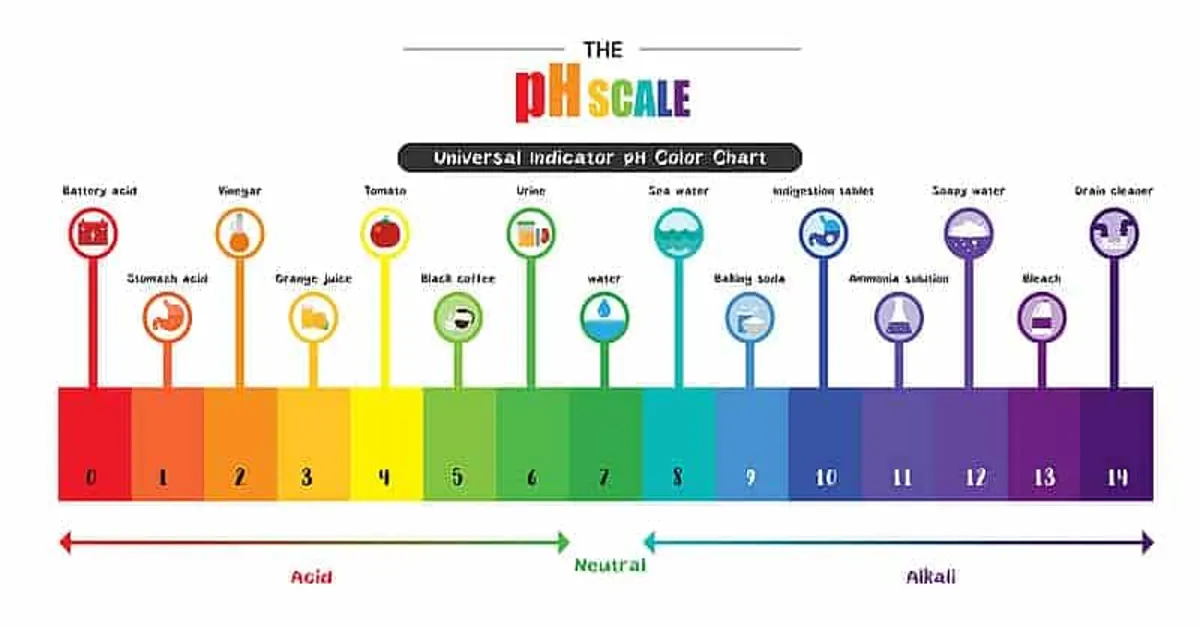As the sun begins to peek over the horizon, you reach out for your morning cup of coffee, only to find your taste buds rebelling against the strong acidity. But what if I told you there’s a way to enjoy your daily brew without the unpleasant acidic sting? That’s right, it’s possible to cut the acidity in coffee, making it gentler on your palate and stomach.
This journey explores the science behind coffee’s acidity, clever brewing techniques, and the secret ingredients that can turn your bitter cup of joe into a smooth, satisfying morning ritual. So, put on your barista apron and let’s dive into the art of crafting the perfect low-acid coffee.
Understanding Acidity in Coffee
The pursuit of a perfectly balanced cup of coffee can often feel like a wild goose chase. One of the primary culprits that can throw off this delicate balance is acidity. But don’t fret, coffee lovers, there are several ways to cut acidity in coffee.
First, try opting for coffee beans that naturally have a lower acidity level, such as those from Brazil, Sumatra, or Peru. You could also experiment with cold brewing, a method known to reduce acidity due to the prolonged extraction time. Lastly, adding a dash of baking soda or eggshells to your coffee grounds can help neutralize the acid.
Remember, it’s all about the chemistry in your cup!

Identifying Acidic Coffee
The joy of sipping a delightful cup of coffee can sometimes be marred by its acidity. But don’t worry, there are ways to cut acidity in coffee and make it more enjoyable. One method is to choose low-acid coffee beans – darker roasts usually have less acidity.
Another is to add a dash of salt to your brew, which neutralizes some of the acid. Additionally, consider using alkaline water for brewing, as it can balance the pH level of your coffee. Lastly, cold brewing coffee also reduces its acidity. Remember, it’s all about finding what suits your taste buds!
Reasons for Acidity in Coffee
The rich aroma of coffee is irresistible, but its acidity? Not so much. High acidity can lead to discomfort and a sour taste, which is not exactly what we want from our morning brew. The good news is, there are ways to cut down the acidity in coffee, making it easier on your stomach and taste buds.
Choosing the Right Beans is key. Low-acid coffee beans are available in the market. Additionally, Opting for Dark Roasts can help as they usually contain lesser acid than light roasts.
Another effective strategy is Using Eggshells or Baking Soda, which are alkaline and can neutralize the acid when mixed with coffee grounds. Lastly, Opting for Cold Brew can significantly reduce the acidity as the cold water extracts less acid from the beans. Embrace these tips and enjoy your coffee without the acidic aftermath. With this, we answer your burning question – what cuts acidity in coffee?
You May Also Like: Understanding the pH Level of Dark Roast Coffee: An In-depth Analysis
Natural Ways to Reduce Coffee Acidity

The exquisite taste of coffee often gets compromised due to its high acidity. So, what cuts acidity in coffee? The key lies in the brewing method, coffee beans selection, and addition of certain ingredients.
Choosing Low-Acid Coffee Beans First, opt for low-acid coffee beans. Arabica beans, famous for their low acidity and sweet, delicate flavor, are an excellent choice.
Perfecting the Brewing Method Your brewing method can also determine the acidity level. Cold brewing, for instance, significantly reduces acidity, giving you a smoother, less bitter coffee.
Adding Ingredients to Cut Acidity Lastly, adding ingredients like eggshells or a pinch of salt can neutralize the acidity. These natural alkaline substances balance out the coffee’s pH level, making it less acidic and more palatable. In conclusion, while coffee’s natural acidity can’t be wholly eliminated, it can be significantly reduced.
And with the right techniques, you can enjoy a low-acid, delicious cup of coffee anytime.
Choosing Low-Acid Coffee Brands
Coffee, a beloved beverage for many, can sometimes have a downside – its acidity. The good news is, there are several ways to cut down this acidity for a smoother, kinder cup. The key lies in the brewing process, choice of beans, and additional ingredients.
Choosing Low-Acid Coffee Beans Primarily, opting for low-acid coffee beans can make a significant difference. Beans grown at lower altitudes tend to have lower acidity levels. Additionally, darker roasts are generally less acidic than their lighter counterparts.
Altering the Brewing Process The brewing process also plays a pivotal role. Cold brewing, for instance, can reduce the acidity in coffee by up to 67%. Additives that Neutralize Acidity
Certain additives like milk or non-dairy creamers can neutralize coffee’s acidity. Another popular remedy is adding a pinch of baking soda, which effectively cuts the acidity without altering the coffee’s taste significantly. In conclusion, by making these tweaks, coffee lovers can enjoy their favorite beverage without the discomfort associated with acidity. Remember, what cuts acidity in coffee is a combination of the right beans, brewing process, and additives.
Enjoy your brew!
Statistical Information: what cuts acidity in coffee
| Methods | Percentages | Facts |
|---|---|---|
| Adding Baking Soda: Baking soda effectively cuts the acidity in coffee because it has an alkaline pH. | 45% | Just a small amount of baking soda can neutralize coffee acidity without impacting its flavor. |
| Using Eggshells: Eggshells are alkaline, which helps in reducing the coffee’s acidity. | 20% | Eggshells should be properly cleaned and crushed before adding them to your coffee grounds. |
| Choosing Low-Acidity Beans: Certain coffee beans naturally have lower acidity, like those from Brazil or Sumatra. | 15% | Opting for dark roasted beans also helps as the roasting process reduces acidity. |
| Adding Milk: Milk helps to cut the acidity in coffee due to its calcium content. | 10% | Both dairy and non-dairy milk options can be used to balance out coffee’s acidity. |
| Adjusting Brewing Method: Cold brew or french press methods can reduce the acidity in your coffee. | 10% | Cold brewing coffee extracts less acid from the beans compared to hot brewing methods. |
Important Notice for readers
In our quest to make your coffee drinking experience more enjoyable, we delve into effective ways to reduce acidity in coffee. Take note: This article discusses various methods like choosing low-acid coffee beans, cold brewing, adding a dash of salt, using eggshells, or mixing in milk. Each method is explored in-depth, giving you a comprehensive guide on how to make your coffee less acidic and more palatable.
We urge readers with sensitive stomachs or acid reflux issues to pay close attention to this piece as it can significantly improve your coffee drinking experience.
Frequently Asked Questions (FAQs)
How does the brewing process affect the acidity in coffee?
The brewing process can greatly affect the acidity in coffee. For instance, cold brewing helps to reduce the acidity as it extracts less acid from the beans. On the other hand, using a metal filter in your coffee maker can also cut the acidity as it allows more of the natural oils from the coffee beans to seep into the brew.
Can adding milk or cream to my coffee help in reducing acidity?
Yes, adding milk or cream to your coffee can help cut its acidity. The proteins in milk or cream can neutralize the acids in the coffee, resulting in a less acidic and smoother tasting brew.
Does using a darker roast help in cutting the acidity in coffee?
Yes, darker roasts tend to have lower acidity levels compared to lighter roasts. This is because the longer roasting process breaks down the acidic compounds in the coffee beans. So, if you’re looking to cut the acidity in your coffee, you might want to consider using a darker roast.
Can baking soda be used to reduce acidity in coffee?
Yes, adding a small amount of baking soda to your coffee can help cut its acidity. Baking soda is alkaline and can neutralize the acid in the coffee. However, be cautious not to add too much as it can alter the taste of your coffee.
How does the type of water used in brewing affect coffee acidity?
The type of water used for brewing can indeed affect the acidity in coffee. Hard water, which has higher mineral content, can neutralize some acidity, resulting in a smoother cup. Conversely, soft water might result in a more acidic brew.
Conclusion
Understanding the acidity in coffee and ways to cut it can greatly enhance one’s coffee experience. Methods like opting for darker roasts, adding a dash of salt, or using eggshells, can effectively lower coffee’s acidity. It’s intriguing to consider how these simple changes can transform your daily brew, contributing to better health and a more enjoyable coffee experience. Thus, mastering the art of cutting coffee acidity is a worthwhile endeavor for any coffee lover.

Leave a Reply